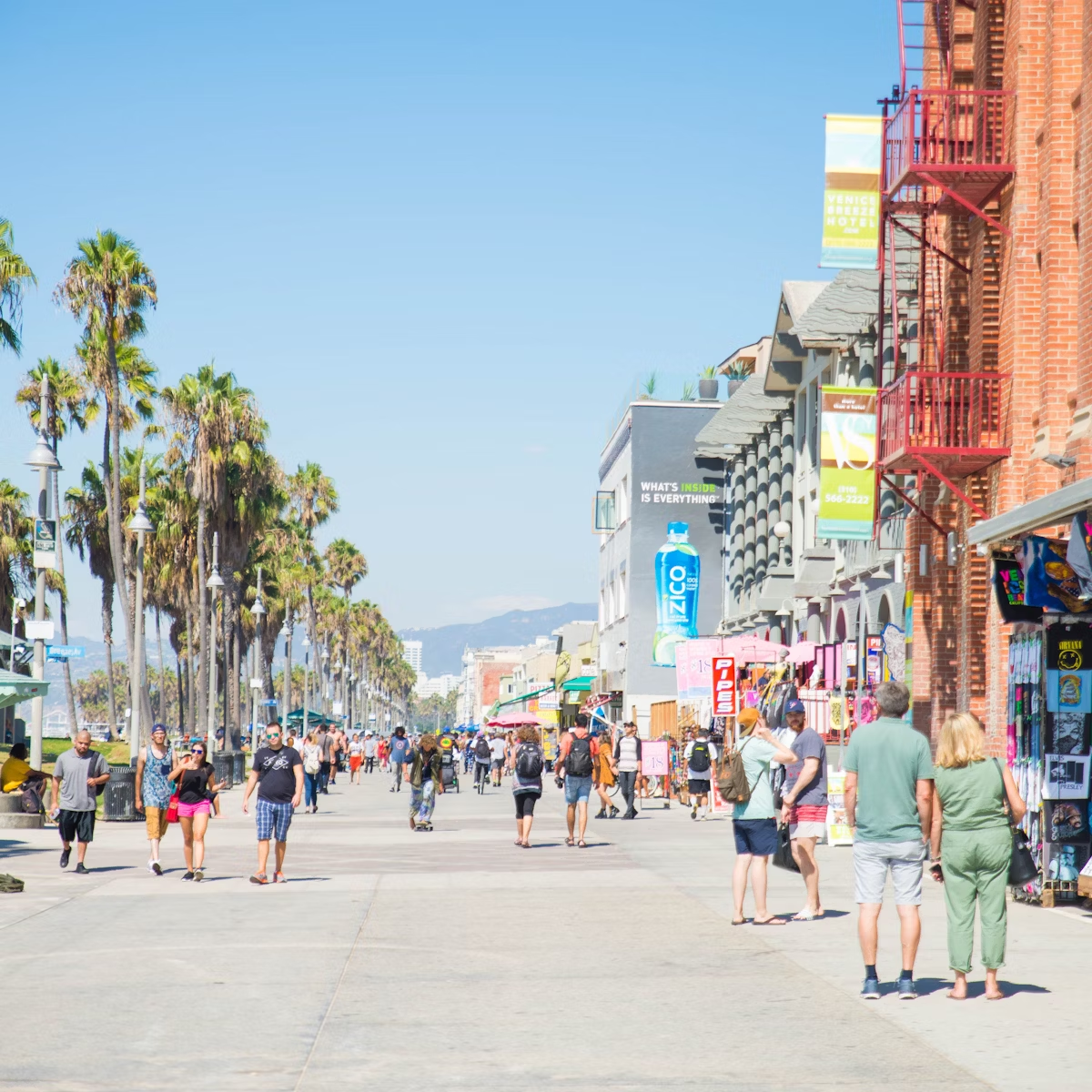LA is unlike any other city, and this cathedral is unlike any other cathedral. Seat of the US's largest Roman Catholic archdiocese (some five million people), opened in 2002 and designed by the Spanish architect José Rafael Moneo, it pushes aside classical aesthetic in favor of a postmodern look that cleverly captures the city's history and diverse cultures, as well as its famous sunlight. Once you get past the initial surprise, the building grows – and grows – on you.
First there's the approach. Steps from the Music Center and Grand Park, a fountain near the Temple St entrance quotes the parable of Jesus and the Samaritan woman, 'I shall give you living water,' in the dozens of languages spoken within the archdiocese. Between here and the main building, a large plaza recalls the church plazas of Mexico.
The cathedral's walls are made of architectural concrete, the putty color of which evokes the adobe walls of the early California missions, and windows several stories up are lined inside with alabaster for a gentle, filtered natural sunlight.
Visitors enter not into the main sanctuary but at the cathedral's left side through massive 30ft x 30ft, 25-ton bronze doors designed by LA-based sculptor Robert Graham. Around the doors, 40 ancient symbols (40 being the days of the Ascension and the number of years the Israelites spent wandering in the desert) represent native peoples from around the world – a Chumash condor, Celtic trinity, Samoan kava bowl, Asian heaven symbol, Sicilian legs – while 15 images of the Virgin Mary recall historical depictions such as the Pieta and the Virgin of Guadalupe.
Above the doors: a modernist, 8ft-tall sculpture of Mary. Instead of the traditional veil, crown or jewels, she is dressed in a humble garment, her hair in the traditional style of a Latina or Native American woman, with bare arms outstretched and strong worker's hands to welcome all.
After walking down a long hallway with small chapels on your right, you curve around to the rear of the sanctuary. Along the side walls, about 3000 sq ft of tapestries by artist John Nava represent 135 saints from around the world as they might have dressed in their time and culture. Interspersed among them, images of modern Angelenos are also woven into the tapestries, down to kids in athletic shoes, as if to say that even the most ordinary among us has the potential to become a saint. The tapestries were designed by Nava in his studio in Ojai, Ventura County, and woven in Belgium.
At the far end of the sanctuary are the main altar, choir risers and organ. Above it all hovers the 'lantern', a concrete cross framed with alabaster to let light in during the day and illuminate the night sky above Fwy 101, which runs to the north below the cathedral. Exiting back outside the main sanctuary, toward the freeway are an equally modernist bell tower and gardens in both Western and Asian styles.
Allow 30 minutes to wander inside the cathedral and the exterior garden areas.
Parking costs $4 per 20 minutes Monday to Friday ($20 max), and $9 flat fee Saturdays, Sundays and holidays. Validated parking is available for those attending Mass.








